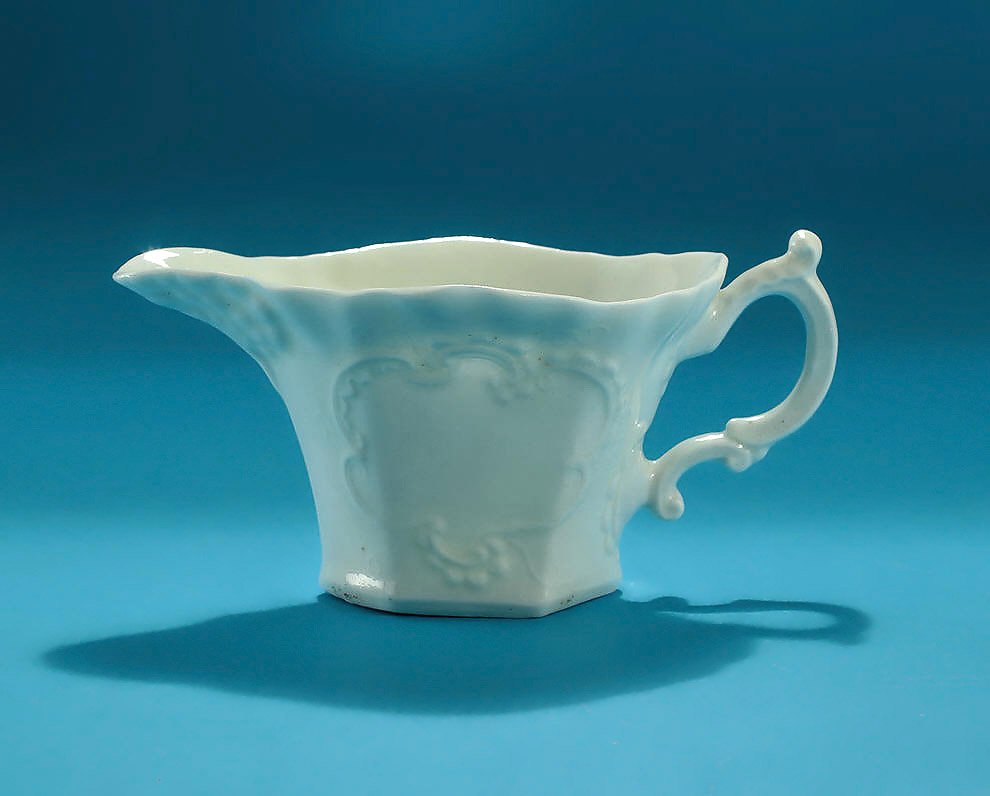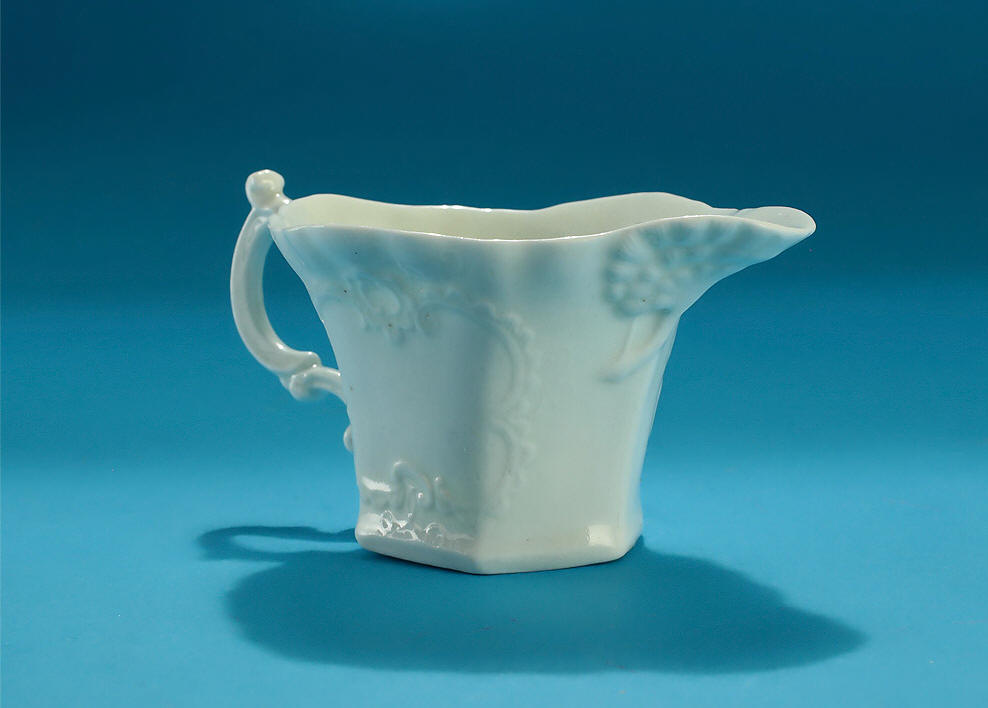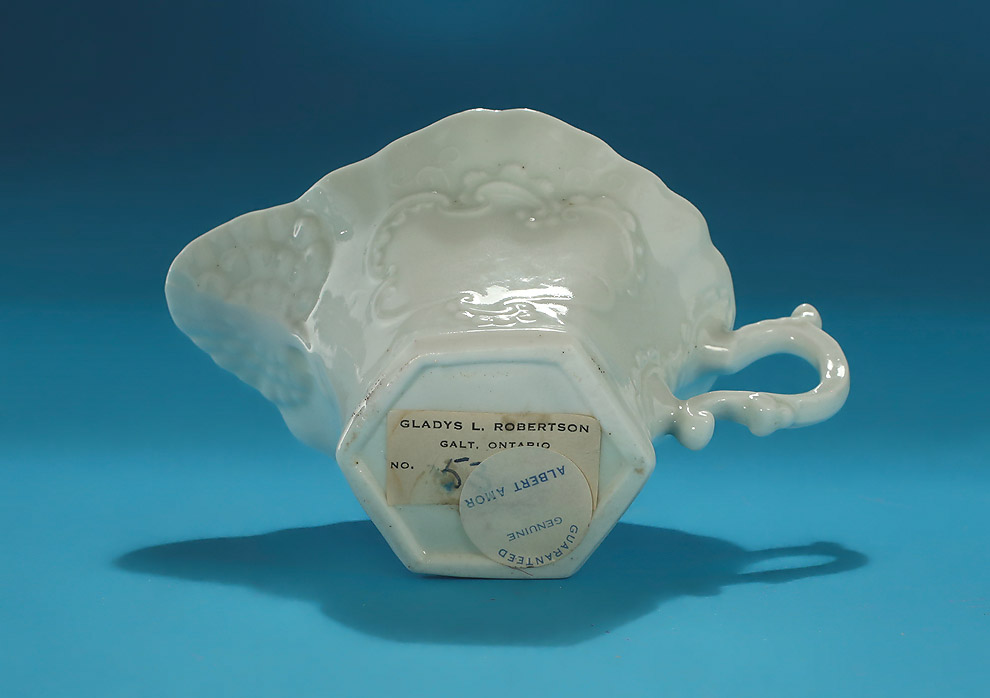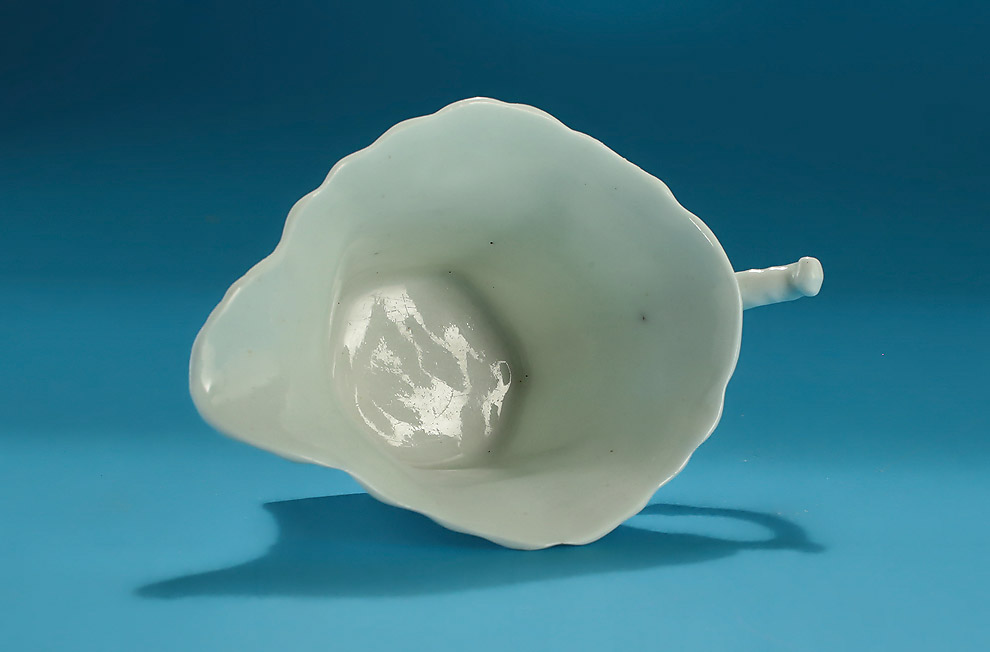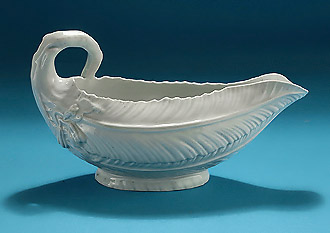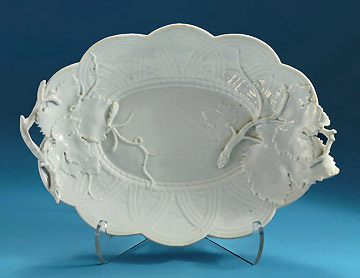M. FORD CREECH ANTIQUES & FINE ARTS
Worcester hexagonal white-glazed creamboat England, c1760-62 |
|||||||||
About White Porcelains
The first white porcelain was produced in China during the Song Dynasty (960-1269 AD). It was known as Ding (Ting) ware - a white paste covered with an almost transparent ivory glaze. The forms were quite simple, with incised or stamped decoration. About the same time, colored glazes were also introduced. These showier glazes, as well as underglaze blue, overtook the simple elegance of white Ding wares.
It was not until the end of the Ming Dynasty, (circa 1685-1644), that kilns in the Fukien province introduced Dehua wares ("blanc de chine") - a white porcelain with creamy glaze. The majority of the forms were small figures, bottles, dishes, and libation cups and beakers. Upon reaching Europe, these crisply molded cups and beakers became immensely popular - and from the late 1600's, imitated in varying pastes and glazes by European manufactories. Among the earliest European producers were : Saint-Cloud, Mennecy and Chantilly in France, Meissen in Saxony (Germany), and in England, Lund's Bristol, and particularly early Chelsea and Bow.
Unlike Chelsea and Bow, Worcester left very little in the white - a few small creamboats and sauceboats, 2 drum form teapot forms, some lovely figures - and a truly spectacular white rococo-molded cistern, inspired by a silver shape. As Worcester concentrated more on enamel and blue and white decoration, there is speculation that the few remaining Worcester white wares might simply be unfinished - or perhaps somehow flawed. Also See :
We welcome and encourage all inquiries regarding our stock. We will make every attempt to answer any questions you might have.
For information, call (901) 761-1163 or (901) 827-4668, or Email : mfcreech@bellsouth.net or mfordcreech@gmail.com American Express, Mastercard, Visa and Discover accepted
M. Ford Creech Antiques & Fine Arts / 581 South Perkins Road / Memphis, TN 38117 / USA / Wed.-Sat. 11-6, or by appointment
|
